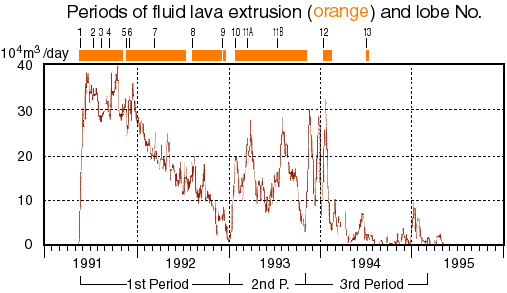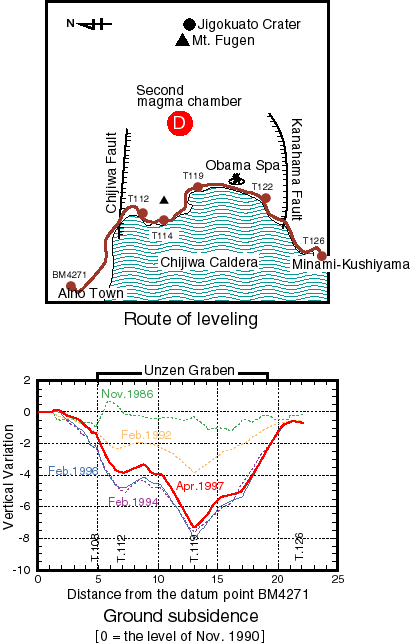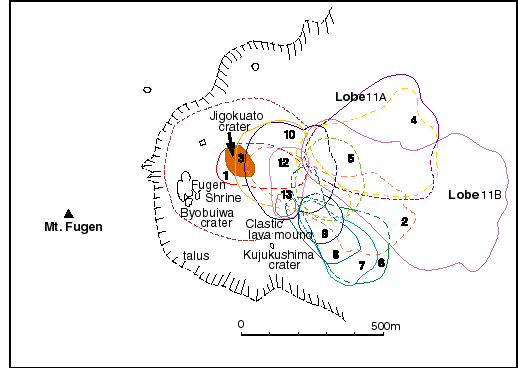 |
 Because of the lava extrusion Because of the lava extrusion
 to the amount of 200,000,000 m3 to the amount of 200,000,000 m3
 in this eruption, in this eruption,
 Route 251 faced to Route 251 faced to
 Tachibana Bay Tachibana Bay
 (the Chijiwa caldera) (the Chijiwa caldera)
 sank at maximum by 8 cm sank at maximum by 8 cm
 at Kitano, at Kitano,
 the Obama Town the Obama Town
 (the leveling point T119). (the leveling point T119).

 It has been clarified It has been clarified
 that the origin of ground shrinking that the origin of ground shrinking
 (the second magma chamber) (the second magma chamber)
 hides itself 10km deep under hides itself 10km deep under
 the point the point
 D D
 (the red mark below), (the red mark below),
 by observing by observing
 the ground deformation the ground deformation
 over a broad area over a broad area
 in the western part in the western part
 of Unzen Volcano. of Unzen Volcano.

 The position of The position of
 main magma chamber main magma chamber
 assumed to exist beneath assumed to exist beneath
 Tachibana Bay Tachibana Bay
 is very deep is very deep
 and its influence and its influence
 to ground subsidence to ground subsidence
 seems to be concealed seems to be concealed
 within the above data. within the above data.
 Moreover no sufficient Moreover no sufficient
 observation around the bay observation around the bay
 has been carried out has been carried out
 because it is in a sea area. because it is in a sea area.

|

 Top of Part 3
Top of Part 3

 Previous p.
Previous p.

 Next page
Next page
 The lava extruded
The lava extruded
 from the Jigokuato crater
from the Jigokuato crater
 was dacite magma
was dacite magma
 in which the content
in which the content
 of SiO2 was 64 wt%.
of SiO2 was 64 wt%.
 It had a slight
It had a slight
 fluidity and successively
fluidity and successively
 formed lava lobes;
formed lava lobes;
 some were grown to be
some were grown to be
 crown-like and others were
crown-like and others were
 elongated
elongated
 to be tongue-like hanging
to be tongue-like hanging
 on the eastern slope.
on the eastern slope.
 Newly coming lava
Newly coming lava
 pushed up older lobes
pushed up older lobes
 to generate a huge
to generate a huge
 lava dome finally.
lava dome finally.



